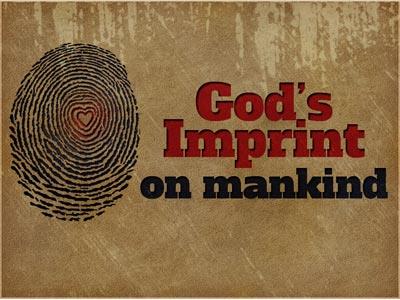-
In The Beginning Series
Contributed by Michael Stark on Nov 15, 2014 (message contributor)
Summary: The message explores the question of whether the account of creation provided in Genesis is accurate or flawed.
“In the beginning, God created the heavens and the earth.” [1]
Carl Sagan popularised the saying, “The Cosmos is all that is or ever was or ever will be.” The statement was the opening affirmation of Cosmos, the television series Sagan hosted. This has become a statement of faith for those who have chosen to deny a Creator to Whom man is accountable. From earliest days of human history people have attempted to account for how the things that are came into being; this was the statement acceptable to agnostics and atheists. Sagan, whether he was able to admit it or not, deified the cosmos, just as multiplied cultures have done since the days immediately following the fall of our first parents.
Ultimately, there is but one explanation that has ever been advanced to account for the universe—great powers and/or beings have brought all that is into existence. Interest in the subject of origins waxes and wanes, but never quite fades into the background. Whether dressed up in language that is sold as scientific, cloaked in mythological terms or stated in the straight forward language of the Pentateuch, all accounts of origins finally appeal to a Creator.
The Hindus have several creation myths. In the Rigveda, Purusha, the primeval cosmic being is described as “that that has ever existed and will ever exist.” The “mundane egg” was born from Purusha, though it is not said how this was accomplished. The gods then performed a sacrifice with the Purusha to create all that is in the manifested world from his various body parts and his mind. [2]
In another of the Hindu myths, there existed a golden egg before anything was. Brahma emerged from the egg and created the world. [3] Robert Graves has given us a form of this myth, telling how the Pelasgians (Bronze Age Greeks), imagined that the supreme creatrix, Eurynome—goddess of all things—rose naked from Chaos to part sea from sky so that she could dance upon the waves. She caught the north wind at her back, and rubbing it between her hands, she warmed the pneuma and spontaneously generated the serpent Ophion. Ophion mated with her; and then, in the form of a dove upon the waves she laid the Cosmic Egg and commanded Ophion to incubate it by coiling seven times around it until it split in two and hatched all things that exist—sun, moon, planets, stars, the earth with its mountains and rivers, its trees, herbs and living creatures. [4]
One of the Egyptian creation myths taught that eight gods representing the primeval waters came together and made all things. These gods were divided into male and female groups, the males represented as frogs and the females as snakes. These two groups eventually converged to produce the pyramidal mount; and from that mound emerged the sun, which rose into the sky to light the world. [5]
Modern minds will not appeal to gods, choosing rather to deify unseen forces of nature. In this, the modern mind is not unlike the Greek and Roman mind. During the past several decades, science, and in particular the science of astrophysics has undergone what can only be described as a revolution. Since soon after publication of Darwin’s “Origin of Species,” people have rejected the idea of creation. They ascribed to the concepts of “time” and “chance” mythic power to create. Though not necessarily stated in bold terms, it was assumed that this mythological concept would permit mankind to live without fear of accountability to the Creator.
For generations the prevailing view of the universe had been what was described as the Steady State Theory. This view presented the concept that the universe has always been and will ever be. In this view, the universe is thought to be ungenerated and indestructible, hence Sagan’s religious assertion. The Steady State view was blatantly materialistic and atheistic, having no place for a Creator, even though it did deify time and chance.
More recently, this view has been forced into retirement by the theory that the universe actually had an instance of creation. In this newer view, the universe came into existence somewhere between fifteen and twenty billion years ago in a gigantic fireball explosion that sent suns and planets tumbling outward from a centre into the form we now observe. Furthermore, in this more recent view, the components of the universe are still moving outward. This new theory is called the Big Bang Theory in reference to the instance of creation.
The change in modern scientific thought is rooted in a discovery reported in 1913. Vesto Melvin Slipher, an astronomer at the Lowell Observatory in Flagstaff, Arizona, reported stars appeared to be receding from the earth at tremendous speeds—up to two million miles per hour. The foundation for this report was the result of study of the shifting light spectrum of distant stars in galaxies far removed from our own. Six years later, in 1919, another American astronomer, Edwin Hubble, used Slipher's findings to formulate a law for an expanding universe. Hubble’s law pointed to a moment of creation. In the meantime, Albert Einstein's theories of relativity were shaking Newtonian physics. Simultaneously, two Bell Telephone Laboratory scientists, Arno Penzias and Robert Wilson, were using new and sophisticated electronic equipment to pick up background radiation from all parts of the universe, which they now identified as the leftover "noise" of that first great explosion. Growing out of this view is the knowledge that if there was an instance of creation there may well have been a Creator.

 Sermon Central
Sermon Central



